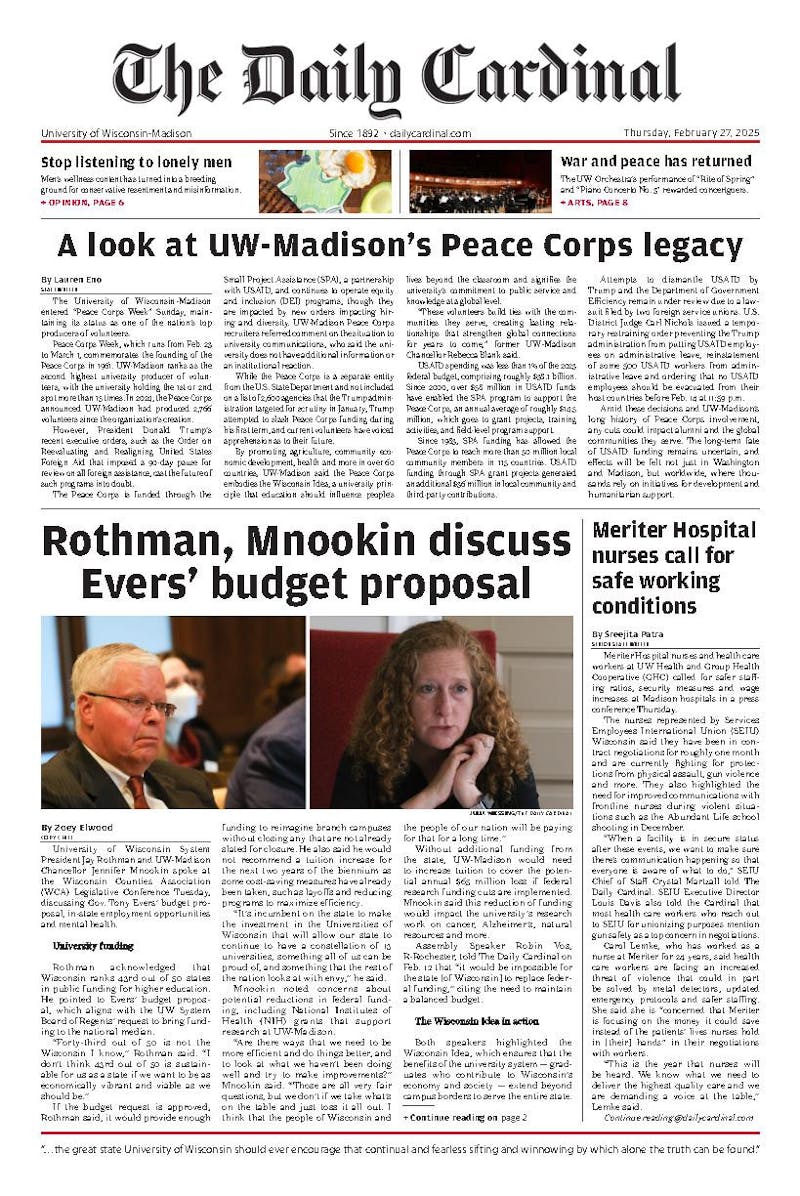As the necessity of obtaining a higher education degree in order to ensure job security rises, students face additional increases in the overall cost of attendance at colleges and universities throughout the state.
This causes many to seek out student loans to pay for their massive self-investment. However, many experts say that the payment plans for student loans are often disadvantageous, causing a whopping $1.4 trillion of outstanding student debt across America.
Student loans are particularly difficult to pay back because one cannot refinance them at a later time, something available for other forms of debt like home payments. This puts students at an extreme disadvantage to quickly repay the debt they have racked up over the last four or so years.
$24 billion of that $1.4 trillion national outstanding student loans come directly from Wisconsin. This puts the state in 10th place in the country for the number of college students with unpaid debt.
Gov. Scott Walker’s first budget raised the cost of in-state tuition for the UW System by 5 percent and then proceeded to freeze that cost for the next eight years.
A tuition freeze is traditionally supposed to create a break for students by securing their price of schooling upon entrance, however, this has not been the case in Wisconsin. Over the last eight years, the in-state cost of attendance has risen by over 17 percent, a significant rise, but only a fraction compared to the out-of-state tuition growth of almost 44 percent.
Analiese Eicher, the student debt program director for One Wisconsin Now, explained that after freezing tuition, Walker’s administration also considerably cut the amount of funding allocated to the universities. Because of this, universities had to find other ways to gain the revenue necessary to provide sufficient classes, advising and other services for students.
Despite the tuition freeze, students still have to pay for other things while attending school. The increase in cost of attendance stems from rising prices in markets like housing and dining services.
“If for some reason you cannot get a mandatory class for your major because the university isn’t funded enough to have enough classes, then you’re basically saying that in order to graduate, you now have to take another semester,” Eicher said. “We are shortingchanging the university, we are shortchanging the students and we are causing them to take longer to graduate, which means they are not moving into the job market and are taking out even more student loans.”
Fenaba Addo, a professor of consumer science at UW-Madison, also said taking longer to graduate or dropping out can further exacerbate the student loan problem. She claimed some of the highest default rates in the country are among former students who started and did not complete their studies.
While most student loan plans expect repayment in under 10 years, a study from the One Wisconsin Now found loan repayment takes about 19.7 years for bachelor’s degrees and 23 years for graduate degrees.
Even before repayment, some students have a much more difficult time even accessing financial services.
“Disadvantaged students have less access to resources which make navigating college and the college process more difficult, and students from more advantaged backgrounds leave school with less debt,” Addo said.
Wisconsin became the first state to consider a bill that would allow students to refinance their student loans at lower interest rates in an attempt to support repayment in the 2013 legislative session.
Democrats have introduced the “Higher Ed, Lower Debt” legislation in the last three consecutive sessions; however, it has never passed. This session, the bill did not receive a hearing.
Since 2013, several other states have adopted and passed the model, including Minnesota.
Instead, Walker has suggested students try to refinance their student loans with the UW Credit Union. The legislature passed a bill last session that would make this type of deal easier.
However, according to Eicher, students who sought this out were offered interest rates of about 6.8 percent, which is higher than the rates they were currently paying from the federal government.
“The state could actually figure out how to get someone a better interest rate, they are just not willing to try,” Eicher said. “Student debt is affecting about a million people here and that is impacting their ability to buy homes, buy cars, save for retirement, have children — basically everything we are supposed to do once we graduate from college.”






